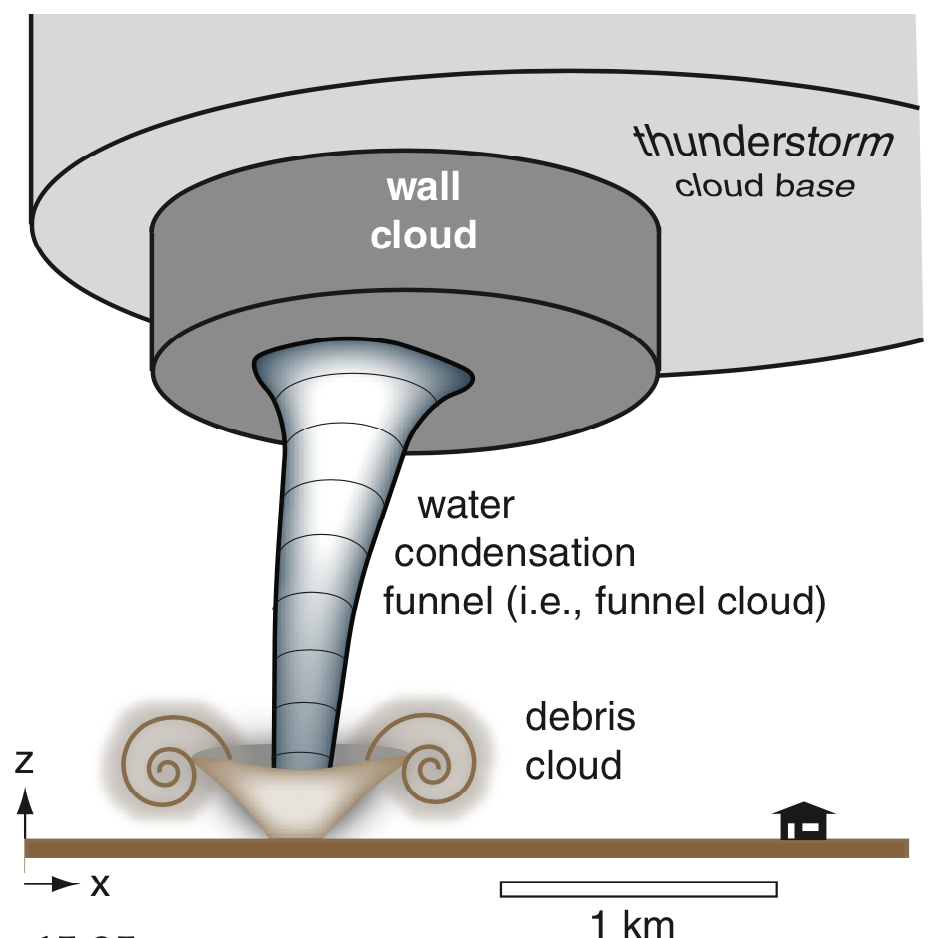
What are the people called who study tornadoes? People who study tornadoes are just research meteorologists or atmospheric scientists. Once a tornado is formed and has been detected, warnings can be issued based on the path of the storm producing the tornado, but even these cannot be perfectly precise about who will or will not be struck.

However, it is not yet possible to predict in advance exactly when and where they will develop, how strong they will be, or precisely what path they will follow. When forecasters see those conditions, they can predict that tornadoes are likely to occur. Although the process by which tornadoes form is not completely understood, scientific research has revealed that tornadoes usually form under certain types of atmospheric conditions. Can tornadoes be predicted? Yes, but only to a limited extent. How do tornadoes form? See our explanation in the Tornado Types section. If your area is not listed, contact your local National Weather Service Office. You can be a storm spotter too! Visit On this site there is a link to local SKYWARN groups. Spotter information is relayed to the National Weather Service. Ordinary citizen volunteers make up what is called the SKYWARN network of storm spotters, who work with their local communities to watch for approaching tornadoes, so those communities can take appropriate action in the event of a tornado. However, human beings remain an important part of the system to detect tornadoes, because not all tornadoes occur in situations where the radar can “see” them. In some cases, it is also possible to detect the flying debris created by a tornado with radar. How are tornadoes detected? Today, the development of Doppler radar has made it possible, under certain circumstances, to detect a tornado's winds with a radar (see our section on Tornado detection). Tornadoes have been known to strip asphalt pavement. Can a tornado dig up the ground? There have been reports of tornadoes blowing dirt and creating a trench 3 feet deep, but it is very uncommon. It used to be believed that the low pressure in a tornado contributed to the damage by making buildings “explode” but this is no longer believed to be true. The biggest threat to living creatures (including humans) from tornadoes is from flying debris and from being tossed about in the wind. Wind speeds that high can cause automobiles to become airborne, rip ordinary homes to shreds, and turn broken glass and other debris into lethal missiles. It is generally believed that tornadic wind speeds can be as high as 300 mph in the most violent tornadoes. What type of damage can tornadoes do? The damage from tornadoes comes from the strong winds they contain and the flying debris they create. They also occur in many other parts of the world, including Australia, Europe, Africa, Asia, and South America. However, they have been known to occur in every state in the United States, on any day of the year, and at any hour. They usually occur during the late afternoon and early evening. They occur mostly during the spring and summer the tornado season comes early in the south and later in the north because spring comes later in the year as one moves northward. they are most common in the central plains of North America, east of the Rocky Mountains and west of the Appalachian Mountains. Where do tornadoes occur? Whenever and wherever conditions are right, tornadoes are possible. Not all tornadoes are the same, of course, and science does not yet completely understand how part of a thunderstorm's energy sometimes gets focused into something as small as a tornado.

What makes them dangerous is that their energy is concentrated in a small area, perhaps only a hundred yards across. As powerful as they are, tornadoes account for only a tiny fraction of the energy in a thunderstorm. Where do tornadoes come from? Tornadoes come from the energy released in a thunderstorm. If your question is not answered below, check this excellent, comprehensive list of tornado FAQs from the NOAA Storm Prediction Center. \).Severe Weather 101 Frequently Asked Questions about Tornadoes


 0 kommentar(er)
0 kommentar(er)
